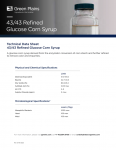Market Insights
Restacking BRICs: Chocolate makers to rethink future growth markets, says Euromonitor

Value sales for chocolate confectionery in China fell 3% last year and are projected to drop 1% this year, according to Euromonitor.
But other Asian markets such as India and Japan and some countries in the Middle East can help chocolate makers maintain growth, it says.
Chocolate consumption to rise only modestly in Asia Pacific
The research organization recently revised its market data and for the first time noted a decline in China’s chocolate confectionery value sales for 2015.
It comes as chocolate consumption in the region is unlikely to grow substantially in the next five years.
Asia Pacific chocolate consumption is expected to rise by just 100 g per capita from 2016 to 2021 – the same growth rate as Western Europe.
“The reason for that is the Chinese slowdown,” Jack Skelly, research analyst for Euromonitor told ConfectioneryNews. “China was the beacon of hope for chocolate manufacturers.”
China’s gross domestic profit (GDP) grew 6.9% in 2015, the slowest rate for 25 years, according to government figures.
Major players in China
Mondelēz said in its latest earnings call: “We remain cautious about China for the remainder of the year, given the soft consumer environment and category trends.”
Mars leads in China
M&M’s and Snickers maker Mars was the market leader in China in 2015 with a 39% value share, according to Euromonitor International.
It has experienced some positives in China with Stride gum, Oreo Thins and belVita breakfast biscuits, but its China biscuits revenue declined in Q1 2016.
Hershey has felt similar pressures. Its CEO J.P. Bilbrey called China the firm’s “number one international priority” in 2013. But in Q4 last year its China chocolate category retail sales declined about 13% due to lower than expected sales for the Chinese New Year season.
Hershey generates more than 80% of its confectionery sales in North America, but has been aiming to increase the share of its sales from overseas markets.
In 2013, it acquired a 80% stake in Chinese confectioner Shanghai Golden Monkey for around $498m and opened an Asia Innovation Center in Shanghai.
Alarm bells in Brazil
“China, Russia and Brazil are all struggling. And considering these markets were the focus for major chocolate manufacturers, there will be a rethink,” said Euromonitor’s Skelly.
Chocolate confectionery growth in Brazil has slowed amid a significant economic downturn in the nation, which Skelly said was having a knock-on effect on other Latin American nations.
“As the saying goes: If Brazil sneezes, Latin America catches a cold,” said Skelly.
Chocolate consumption in Latin America is expected to be flat from 2016 to 2021, predicts Euromonitor.
India the only solid BRIC
Skelly pinpointed India, Indonesia, Japan, Turkey, Saudi Arabia and the UAE as the major chocolate growth markets for the next five years.
Indian consumers are expected to eat 100 g more chocolate by 2021 as the nation’s economy grows and chocolate manufacturers invest heavily in the market.
Market leader and Cadbury maker Mondelēz recently opened a $163m factory in Andhra Pradesh. The facility is Asia’s biggest chocolate factory and will eventually produce as much chocolate as Belgium’s entire output.
India is forecast for a compound annual growth rate (CAGR) in chocolate confectionery value sales of 12% up to 2021, adding an additional $1.7bn in sales.
Japan: Local tastes for a developed market
Skelly also earmarked Asia’s developed market, Japan, for further growth.
“It’s traditionally been a small market but manufacturers are tapping into local tastes,” he said, pointing to Nestlé’s Kit Kat boutiques and flavors such as green tea and innovative local players such as Meiji.
Japan’s chocolate confectionery market is forecast to record a CAGR of +4.4% in the next five years, adding an additional $1.1bn in values sales.
Middle East markets
Turkey is also set to add significant chocolate value sales by 2021. Euromonitor predicts an extra $794m in additional sales in the market and a CAGR of 9.5% in the next five years.
Skelly pointed to the strength of Turkish conglomerate Yildiz Holdings, which owns Ulker, and recently formed a separate $5.2bn confectionery and biscuits division named Pladis after snapping up UK firm United Biscuits.
Indonesia, Saudi Arabia and the UAE represent other high-growth markets, said Skelly.
“They are all fairly secure economies with huge expat populations,” he said.
Middle East investment
Mars, Nestlē and Mondelēz have invested heavily to improve distribution to the Middle East in recent years.
Mondelēz entered a joint venture with Olayan Group and Khalifa Algosaibi Group to increase distribution in Saudi Arabia in 2013 and announced a $90m biscuits plant in Bahrain the following year.
Mars, the chocolate market leader in Saudi Arabia and the UAE, announced in 2014 a $140m plan for new manufacturing facilities in both countries to add Galaxy and Snickers lines. In 2013, it also invested $83m to build its first production line for Twix in Egypt at an existing facility that serves the Middle East & Africa.
Two years ago, Nestlé began producing chocolate in Egypt for the first time after investing $9m to add a Crunch line to its existing dry goods plant, which also exports to the wider region.

















